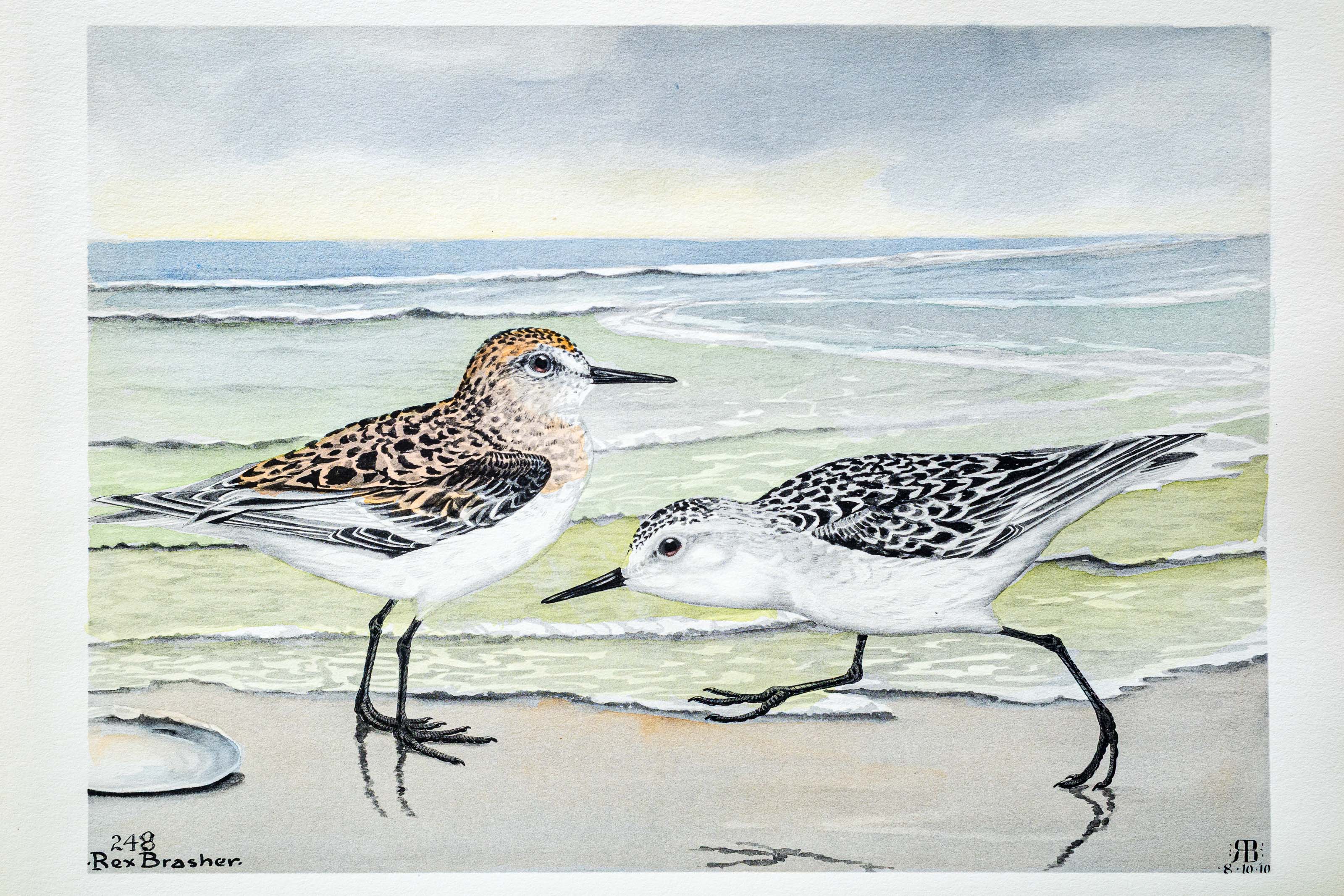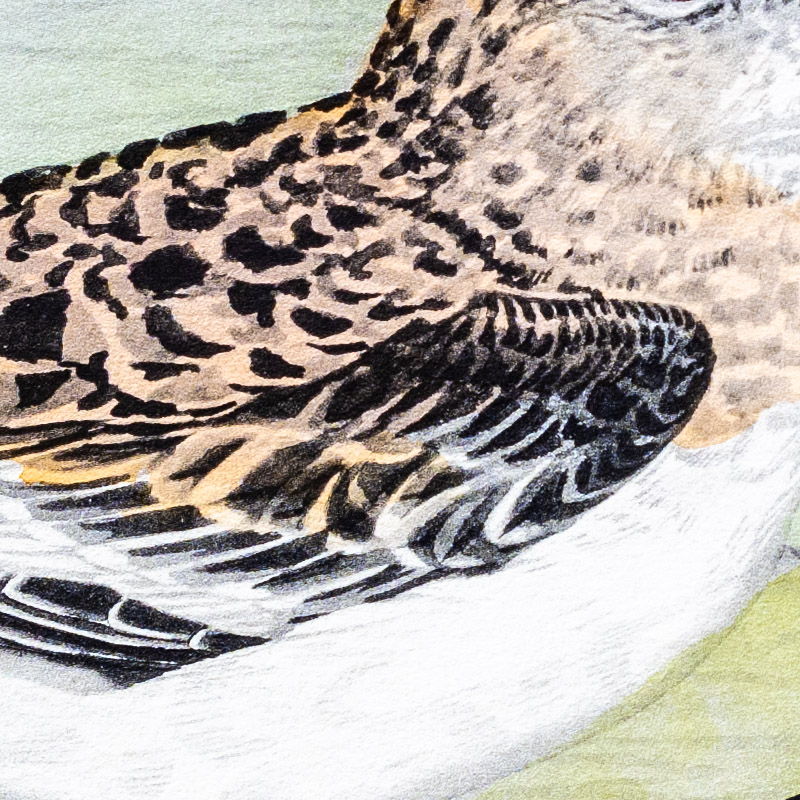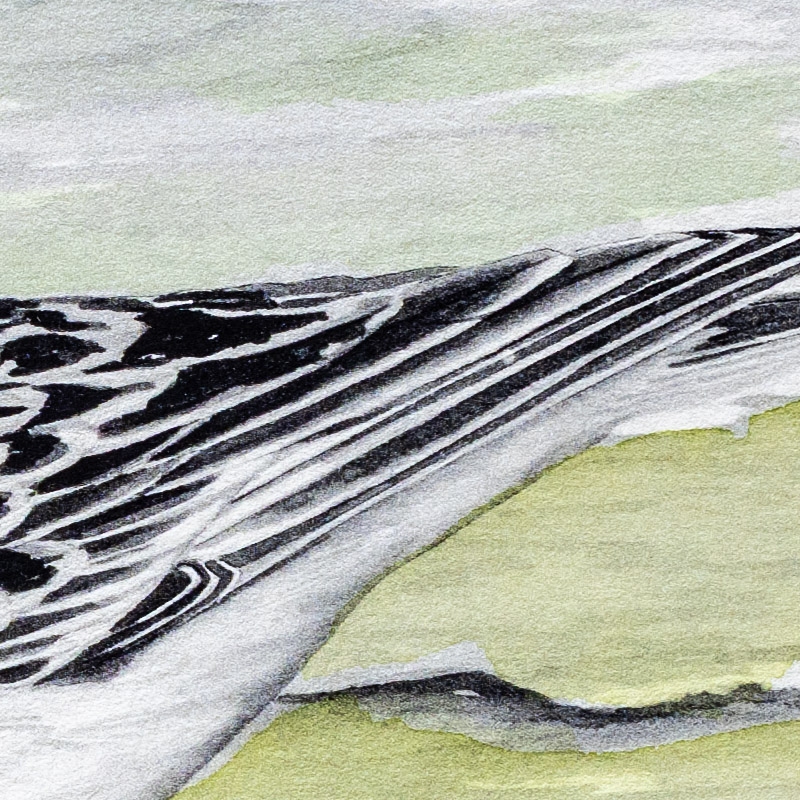






1910
1930
4
248
A team of dedicated board members, volunteers, and student interns has published every page in Volume 9. This volume includes 360 images of paintings and lyrical descriptions of birds, now available online for everyone to enjoy anywhere in the world. This is a monumental task. Each volume requires approximately 400 hours to photograph, edit, transcribe, catalog, and publish online. We need your support to complete this work.
If you're tech-savvy, have a good eye, are meticulous with details, and love structured data, please consider volunteering by emailing us at hello@rexbrasher.org.
We encourage all bird lovers and supporters to consider a monetary donation to support our mission to make Rex's work available for everyone. You can provide a one-time or recurring donation online.
When a southeaster shoulders the white horses of the Atlantic ashore in late August, the SANDERLINGS come to the beaches in flocks of hundreds. The sea turmoil has brot an ample feast and the birds patter along the sand or plane into the gale's eye on motionless wings. Their cleverness in eluding falling surf is amazing — in all the years of observation I have never seen one caught by a breaker.
In the old days gunners considered them "Big Birds" and they were slaughtered by thousands.
They arrive on the bleak Greenland coast in early June and only extreme hardiness enables survival. Remoteness of breeding areas and their winter home in South America where gunmen are few, have prevented extinction so that the Sanderlings still trip across our beaches, and I hope they always will!
The young are able to fly within two weeks and until then are aggressively guarded by the mother. They merge perfectly into their surroundings and probably emit no scent, as they suffer little from enemies.
Cosmopolitan: breeding in Arctic regions and wintering from about 40 degrees N. latitude to southern South America.